Meet Our Team
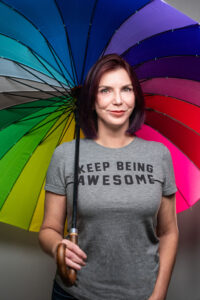 Dr. Kelly Holley-Bockelmann, Director
Dr. Kelly Holley-Bockelmann, Director
I work on galaxy dynamics, gravitational waves, and black holes of all kinds. I am completely geeked by the upcoming Laser Interferometer Space Antenna mission, which will be able to detect merging massive black holes out to the Cosmic Dawn as well as the hum of millions of binary stellar remnants in our own Galaxy orbiting around one another on timescales of about a minute. Plus things we haven’t even thought of yet! Merging black holes, lasers in space, and ripples in spacetime — I have the coolest job.
I love EMIT because I want to help build multi-messenger astronomy into a welcoming, vibrant field — the kind of field I would feel proud to work in. My life is filled with a husband, two kids, 3 cats, 3 frogs, and a very stingy cherry tree. In my free time, I like reading and gardening. I also like doing the following things even though I’m kinda terrible at them: trivia, ping pong, biking, baking, singing loudly, and dancing. My dream is to someday do one of those hanging pull-up things and to get the EMIT team to do karaoke.
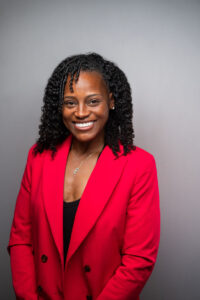
Rayna Brown, Program Coordinator
I am extremely excited to be a part of this trailblazing program that will change the field of Astronomy! I have worked in higher education since 2010, gaining experience in Residence Life, Student Accounting, Academic Advisement, Athletics and Student Affairs; which has allowed me to do what I love most professionally, service and empower students to become the best versions of themselves.
In my free time, I love going on hiking trails/nature walks with my precious dog Bella, cooking, and most of all, spend time with family. You can also find me improving my skills at a local pool hall, archery club or any type of competitive activity. I am a member of the NAACP, The NJ Association of Black Educators, and volunteer my free time with other community organizations, to help advocate for change/improvement in education on all levels.
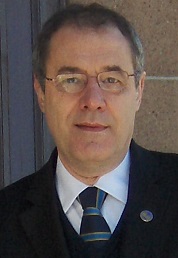
I am a professor of physics at Fisk University. My research interests are in discovering and developing novel materials (mostly single crystals) for a variety of radiation detection applications in medical imaging, national security, and planetary exploration. For the past two decades, I have also served as co-director of the Fisk/Vanderbilt Master’s-to-PhD Bridge Program (FVBP) where not only I got the privilege to co-mentor dozens of FVBP graduate students but, in parallel, I began being exposed to astrophysics research opportunities that require challenging radiation detection solutions that are best exemplified in the EMIT collaboration. Although for me the research is a lot of fun, I am also relaxing in long walks with my dog Bay (named after Ellison Bay, the place where my wife Lisa and I retreat quite often) and working in our backyard herb garden.
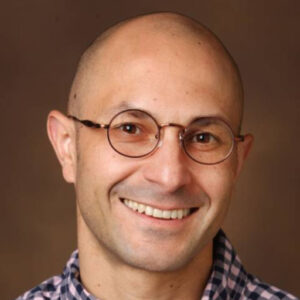
I am an associate professor of mathematics at Vanderbilt. I work on mathematical general relativity and mathematical fluid dynamics, with emphasis on the intersection of these two subjects, i.e., the mathematics of relativistic fluids. Think of describing the dynamics of a heavy star: it consists of a fluid or plasma with very strong gravity. I strive to establish mathematical results that are of relevance to physics. This is one reason why joining EMIT was so exciting to me. Interaction with (Astro-)physicists is a great way of gaining intuition that can be key to proving theorems. Another reason why I am thrilled to be part of EMIT is the opportunity to work with a diverse student body. When I am not proving theorems, I like to exercise, read, and spend time with my family: my wonderful wife Alex (who is a school administrator, one of the toughest jobs in the world!), our dog Mileva (named after Einstein’s first wife), and our two kitties Ginger and Rakoo (who were strays that showed up at hour house one day and decided to stay).
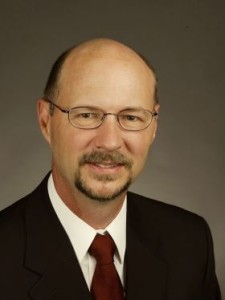
Robert’s relevant research experience includes: 1) forward looking research and development associated with the physics of failure of electronic and photonic devices and integrated circuits (ICs) when exposed to man-made, space, and terrestrial radiation environments; 2) developing new approaches for survivability testing of electronics and photonics; 3) lead radiation effects engineer for various NASA missions including Hubble Space Telescope and James Webb Space Telescope (JWST). In particular, he has extensive experience related to the susceptibility of ICs to single event effects and displacement damage. He is a specialist in the cross-disciplinary area of radiation transport physics and semiconductor device physics. His work has led to: 1) a detailed understanding of how the microscopic interaction of radiation with semiconductor devices results in new failure mechanisms; 2) improvements in qualification methods (test and simulation) used to predict survivability of advanced ICs when exposed to a variety of radiation environments; 3) development and application of radiation transport and device physics modeling approaches to predict device and circuit performance when exposed to various radiation environments. His work has significantly impacted the design, qualification, and verification of various commercial and radiation-hardened ICs when operated in various radiation environments.
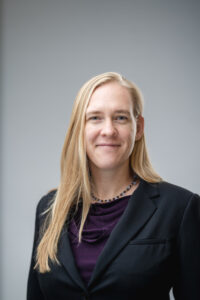
I am an assistant professor of physics and astronomy at Vanderbilt University. My research is on growing supermassive black holes, which we view as quasars. In particular, I leverage my knowledge of quasar central engines to try to find close supermassive black holes in binary systems, which are low-frequency gravitational wave sources expected from galaxy evolution that have never been observed. To do my work, I primarily use space telescopes like the Hubble Space Telescope and big-data surveys of large areas of the sky (including time-domain surveys, which show a movie of the sky instead of a single image) taken with ground-based optical telescopes. I am excited about EMIT because I see it as the perfect channel to form new and diverse collaborations. When I am not looking for binaries, I am an avid cyclist. I ascribe to the belief that the correct number of bikes to own is N+1, where N is the number of bikes you currently own. I also enjoy snowboarding and rock climbing and am owned by one cat named Loki.
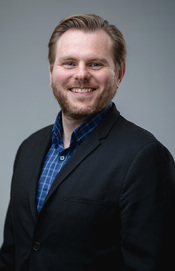
I am an assistant professor of physics and astronomy at Vanderbilt University. My research has stretched across the gravitational-wave spectrum, but I am particularly focused on the low-frequency regime where ensembles of millisecond pulsars are monitored like cosmic clocks to detect timing deflections caused by nanohertz-frequency gravitational waves. One of these “Pulsar Timing Arrays” is called NANOGrav, within which I co-chair the detection working group.
Our expected target is gravitational-wave emission from binary systems of the most massive black holes in the universe, at mass scales that are approximately ten million to a billion greater than ground-based detectors like LIGO are sensitive to. Within this field, I develop statistical techniques and inference strategies designed to tease out the astrophysical nuances of the gravitational-wave signals. I am excited about EMIT because of the tremendous opportunity to infuse this new field of multi-messenger astrophysics with principles of respect and inclusion, leading to better science all around. When not finding new ways to search for gravitational waves, I like to hike, read, cook, spend time with my wife, and act as a loyal employee of my cat, Olive.